Dr. Joy Buongiorno
Geophysical Laboratory, Carnegie Institution for Science, Washington, DC
Collaboration on Deep Carbon Observatory project,
“Biology Meets Subduction”
The reciprocal feedbacks between microorganisms and their environment have governed much of the coevolution of the biosphere, geosphere, and atmosphere through geological time. Evidence from the rock record highlights massive shifts during ancient Earth in terms of redox chemistry and primitive respiration; however, our understanding of the extent to which bioinorganic chemistry and trace metal availability in modern environments governs the trajectory of microbial evolution is limited. To better characterize the biogeochemical interactions between modern microbial communities and their environment, I met up with Dr. Donato Giovannelli at the University of Naples who specializes in the ecosystem functioning of extreme environments and the roles that microorganisms play in global biogeochemistry. Once in Naples, an opportunity to participate in a field campaign in the volcanic region of Argentina arose. The aims of this campaign were exactly aligned with my goals of uncovering the influence of geologic environment on microbial communities. And so, in February, I joined a cross-disciplinary, international team of scientists that included microbiologists (Dr. Karen Lloyd and Dr. Matt Schrenk) and geochemists (Dr. Maarten DeMoor, Dr. Agostina Chiodi, and Dr. Peter Barry). Their approach to constraining the influence of deep subsurface processes on hot spring biogeochemistry is novel and yet obvious—simultaneously measure the microbiology (community diversity, cell abundance, metabolic potential through metagenomic sequencing, etc.), environmental characteristics (temperature, pH, flow rate, mineral content), and geochemistry (noble gas content, trace metal concentrations, stable isotopes, etc.).
During a single week, we sampled 12 geothermally active sites spanning hundreds of kilometers across the Andean backarc of Argentina. With few roads to guide us, we relied on reports from locals to locate our sites, which ranged from hot springs whose fringes were beautifully ornamented with orange microbial mats and iron precipitates to HOT (90°C) fumaroles bubbling out noxious gases to be avoided. Laboratory analysis is already underway on these samples, the results of which will inform our understanding of how microbial communities and their trace metal utilization potentially change in accordance with deep subsurface properties.
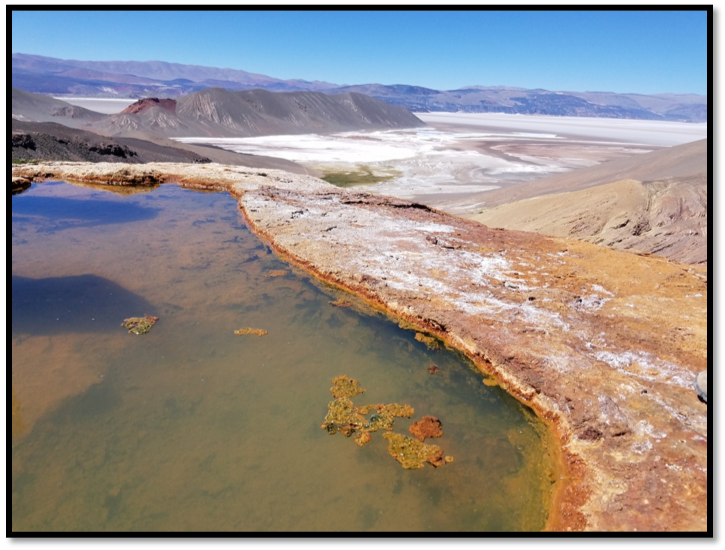
Above: Hot spring overlooking salt flat in the Puna region of Argentina. Elevation 4300 m above sea level.
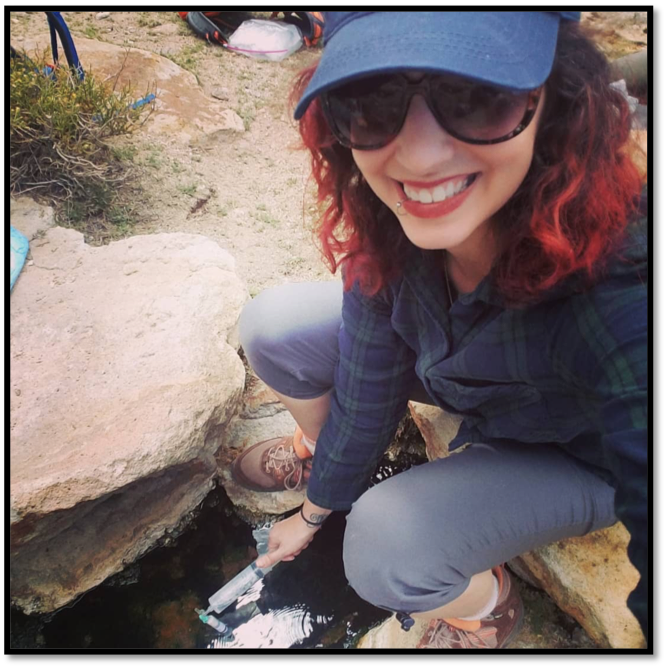
Above Dr. Buongiorno filtering water at Incachule hot spring for hydrocarbon analysis.
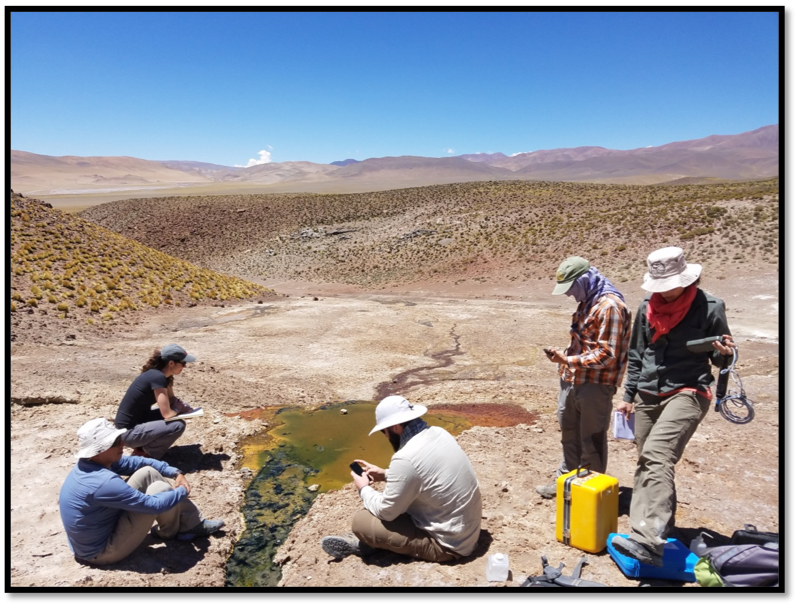
Above: Developing the sampling strategy for a hot spring fringed with microbial mats and mineral precipitates.
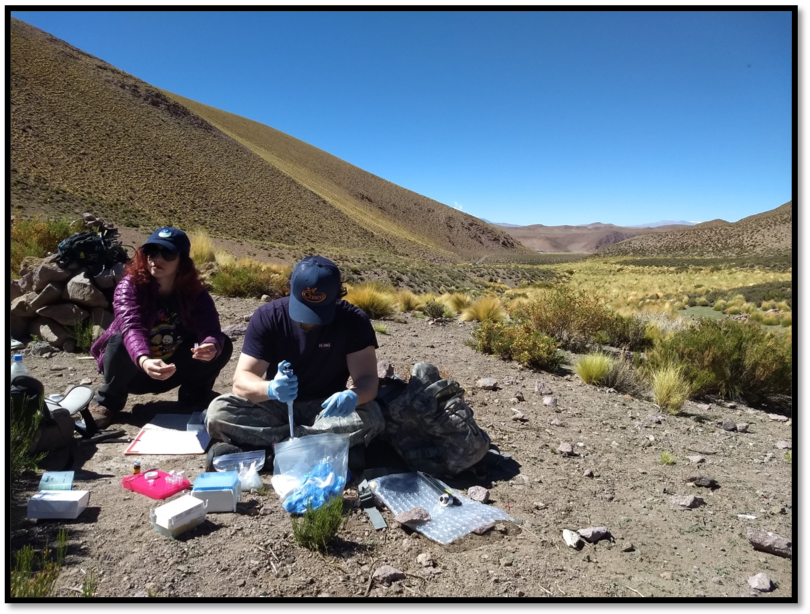
Above: Dr. Buongiorno and TJ Rogers (PhD student) aliquoting water samples for microbiological analysis.
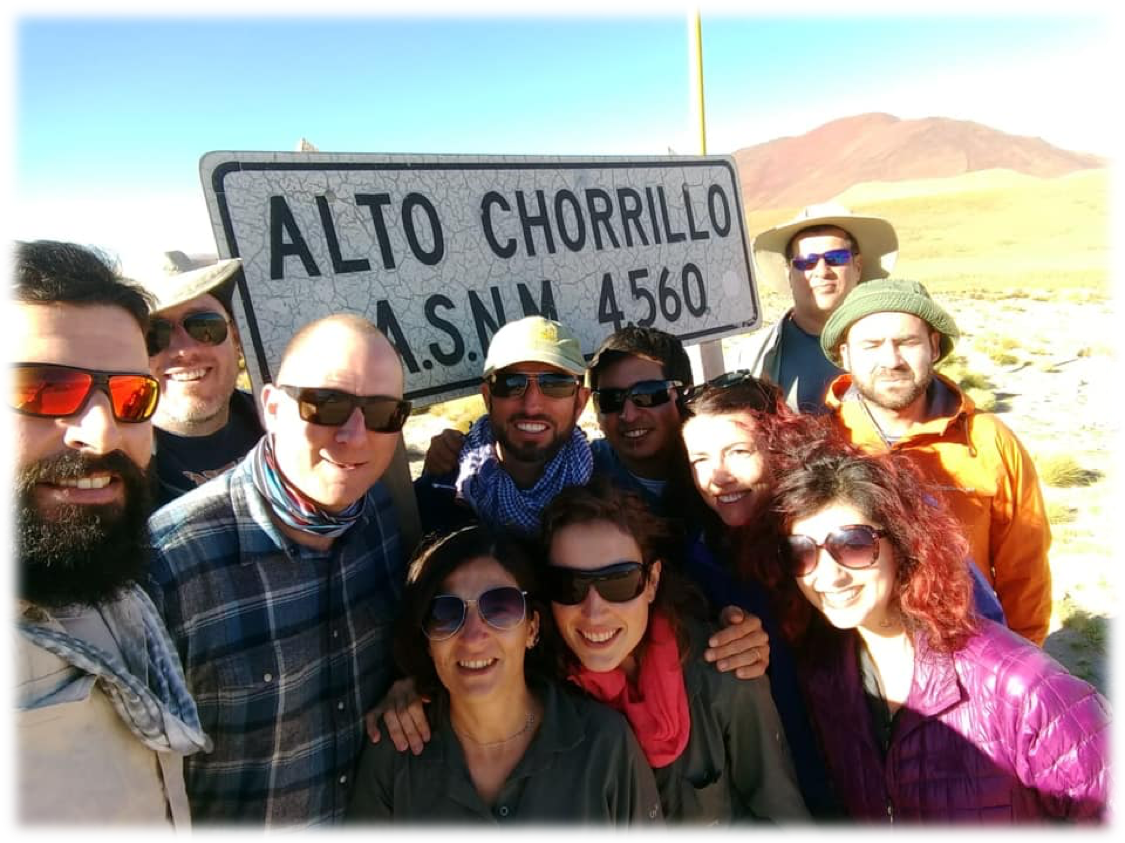
Above:The team of scientists, students, and field assistants. From clockwise from left: Dr. Donato Giovanelli, Dr. Peter Barry, Dr. Matt Schrenk, Dr. Maarten DeMoor, Ruben Filipovich, Dr. Karen Lloyd, Carlos Ramirez, Dr. Gerdhard Jessen, Dr. Joy Buongiorno, Dr. Karen Lloyd, Dr. Agostina Chiodi, Emice Bustos.
</p>